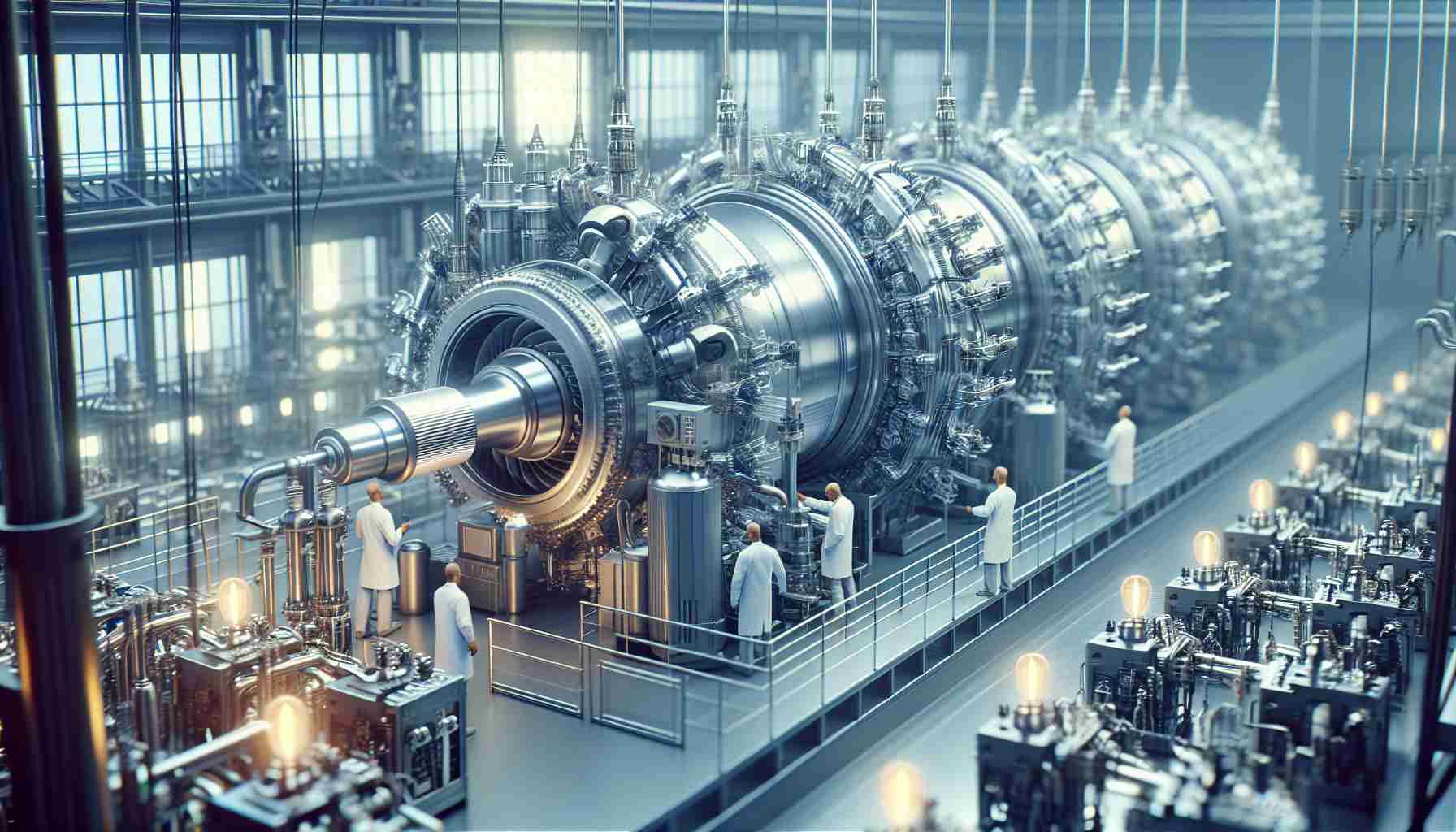Innovative Collaboration to Boost the Hydrogen Sector
In a groundbreaking development for sustainable energy, Turkish EPC giant ENKA has enlisted Kent Engineering to spearhead the detailed design of a state-of-the-art hydrogen production facility. This project, located at the Stanlow Manufacturing Complex in Ellesmere Port, UK, aims to transform the future of low-carbon energy production.
The hydrogen plant, termed HPP1, is set to deliver an impressive 350MW of production capacity and significantly reduce carbon emissions by capturing over 600,000 tonnes of CO2 each year. This facility is integral to the HyNet Cluster initiative, which aims for the UK to achieve a staggering 4GW of low-carbon hydrogen generation.
Kent, recognized for its extensive experience in the sector, has already played a pivotal role in the preliminary phases of HPP1. The Managing Director of Engineering and Consultancy UK at Kent expressed pride in collaborating with ENKA on this landmark project, emphasizing their commitment to leveraging expertise in complex project delivery to ensure its successful execution.
Once operational, HPP1 will become a vital supplier of hydrogen to various industrial entities across North West England, marking a significant step forward in the country’s green energy initiatives. This innovative partnership exemplifies the synergy required to advance sustainable practices in the energy sector, paving the way for a cleaner and more eco-friendly future.
The Wider Impact of Hydrogen Production Innovations
The collaboration between ENKA and Kent Engineering within the hydrogen sector transcends mere technological advancements, with profound implications for society, culture, and the global economy. Hydrogen, as a clean energy source, holds the potential to dramatically reshape industrial practices, significantly reducing reliance on fossil fuels. As countries strive to meet decarbonization targets, projects like HPP1 are essential not just for energy production but also for fostering environmental sustainability and supporting economic resilience.
The HyNet Cluster initiative, underpinning the Stanlow facility, is indicative of a broader trend towards regional energy networks, promoting local job creation in green technology sectors. As hydrogen production scales up, it may catalyze a cultural shift, embracing sustainable practices across various industries, from transportation to manufacturing. The success of hydrogen projects could inspire public acceptance and endorsement of green policies, further embedding sustainability in everyday life.
Moreover, the environmental benefits are paramount. By capturing over 600,000 tonnes of CO2 annually, HPP1 exemplifies an approach to mitigate climate change, a pressing global concern. Future trends indicate a burgeoning market for hydrogen, potentially leading to its adoption as a mainstream energy source. This could position nations that invest in hydrogen infrastructure at the forefront of the global energy economy, reinforcing their competitive advantage while promoting a cleaner planet. The long-term significance of such innovations cannot be overstated: they represent a crucial step towards achieving net-zero emissions and fostering a sustainable future for generations to come.
Transforming Energy: Key Developments and Insights in Hydrogen Production
Innovative Collaboration to Boost the Hydrogen Sector
The hydrogen production sector is witnessing a transformative phase with new collaborative efforts aimed at advancing sustainable energy solutions. A notable example is the partnership between Turkish EPC giant ENKA and Kent Engineering, which is set to lead the design of an advanced hydrogen production facility at the Stanlow Manufacturing Complex in Ellesmere Port, UK.
Project Overview
The hydrogen plant, designated HPP1, boasts a production capacity of 350MW and is designed to capture over 600,000 tonnes of CO2 annually, significantly reducing carbon emissions. HPP1 is a cornerstone of the HyNet Cluster initiative, which aspires to achieve a remarkable 4GW of low-carbon hydrogen generation, positioning the UK as a leader in hydrogen technology and implementation.
Key Features and Benefits
– High Production Capacity: With a 350MW output, HPP1 will play a crucial role in meeting the growing demand for hydrogen as a clean energy source.
– Carbon Capture Technology: The facility’s ability to capture substantial CO2 emissions directly contributes to the UK’s climate goals and underlines commitments to combat climate change.
– Collaboration and Expertise: Kent Engineering brings a wealth of experience in the field, ensuring that innovative and efficient methods are utilized throughout the project’s lifecycle.
Use Cases of Hydrogen Energy
Hydrogen produced at HPP1 is set to supply various industrial players in North West England. Potential applications include:
– Industrial Processes: Hydrogen can replace fossil fuels in various industrial applications, notably in steelmaking and chemical manufacturing.
– Transport Solutions: Hydrogen fuel cells offer a clean alternative for public transport and heavy-duty vehicles, reducing reliance on diesel and petrol.
– Energy Storage: Excess renewable energy can be converted to hydrogen, providing a storage solution that helps balance supply and demand on the grid.
Limitations and Challenges
While the HPP1 project represents a significant advance in hydrogen production, there are challenges to consider:
– Infrastructure Development: A robust distribution network is essential for efficiently delivering hydrogen to end-users.
– Cost of Production: Initial capital expenses for hydrogen production facilities can be high, though operational costs may decrease as technology advances.
– Public Adoption: Broad acceptance and understanding of hydrogen as a viable energy source is necessary for widespread use.
Market Trends and Future Predictions
The global hydrogen market is anticipated to grow significantly, driven by decarbonization efforts and innovative technologies. As countries aim to reduce greenhouse gas emissions, hydrogen is projected to play a pivotal role in the transition to a low-carbon economy. Analysts predict that by 2030, the hydrogen market could reach a valuation of over $200 billion, driven by industrial demand and advancements in green hydrogen production.
Conclusion
The collaboration between ENKA and Kent Engineering is more than an individual project; it symbolizes a larger movement towards sustainable energy solutions. As hydrogen becomes a central player in the energy landscape, initiatives like HPP1 are vital for fostering innovation and propelling the transition to a greener future.
For more detailed insights into the hydrogen economy, head over to Hydrogen Economy.

